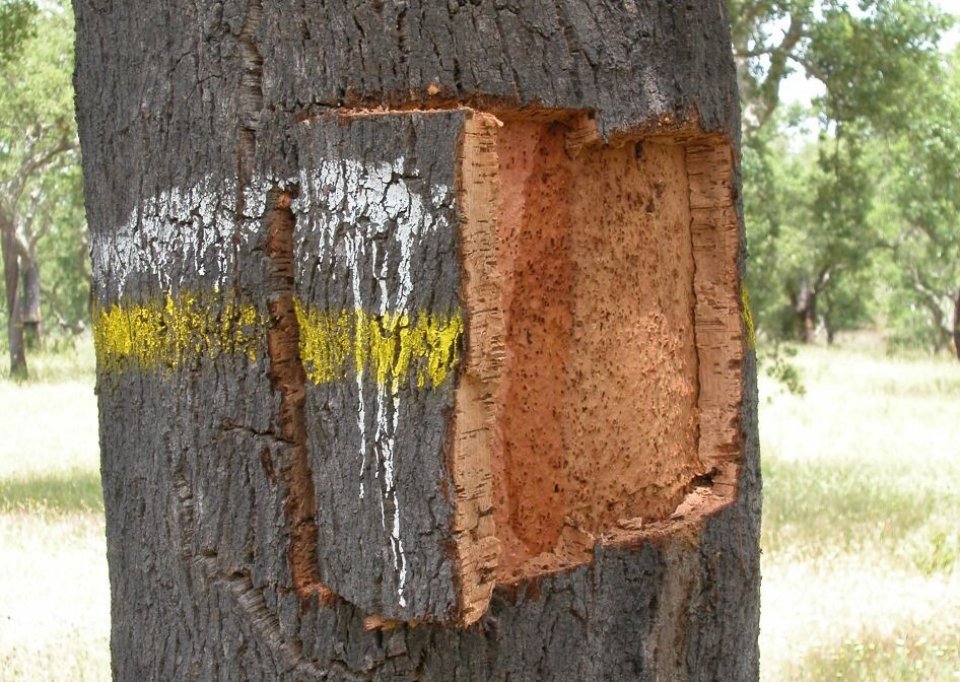
The objective of the current work is the analysis of alternative sampling methods and intensities for estimating cork value before its extraction (price per unit of weight), considering the trade-off between sampling precision and costs. The dataset includes 30 sampling clusters for each of the 6 stands, where the measurement of the tree coordinates in each plot allowed for the simulation of several sampling methods and intensities, and the comparison of the percent errors and sampling costs.
Cork prices depend on its quality and thickness, ensuring the production of high-quality wine stoppers. It is very important to have a forecast of the cork value before its extraction. The Portuguese Forest Service supported the application of a sampling based on selecting trees along a zigzag transect. This method had some weaknesses from both statistical and practical standpoints. Thus, other alternative methods were pursued, looking for a compromise between sampling precision and costs, comparing plots with different fixed radii or number of trees of different sizes.
- The zigzag transect was applied within a homogeneous Montado area. Its length was obtained by dividing the size-area by the total number of sample trees. The trees selected were closest to the sampling points defined at equal distances on the line. The sampling error is high but the transect can be implemented in a day.
- To decrease the sampling error from 15% to 10%, the sampling time must increase by 49%.
- The high variability of cork value among trees in the same stand suggest the use of cluster sampling, where the cluster is a group of neighbouring trees.
- The single-stage cluster sampling is more efficient than random sampling of the same size and guarantees a reasonable sampling error (< = 15%), compatible to one day of work.
The estimation of cork value before its extraction is very important to forest landowners. Cork sampling is recommended to be accomplished following the specific sampling procedures presented. Since this procedure implies additional costs, its optimisation regarding the number of clusters and trees sampled should be considered.
The recommended number of trees per cluster is five to seven. If data from prior samplings are unavailable, the number of clusters should be between 20 and 30. Otherwise, the previously available information will be used to determine the number of clusters (Figure 2).
Market trends have a major impact on the forest landowner economy, so it is essential to forecast cork value as a basis for negotiation with buyers. The main restriction in conducting cork sampling is to ensure cost effectiveness combined with good precision (low error). The procedures that follow cork sampling (cork sample boiling, sample preparation and cork classification), which are responsible for the evaluation of cork quality in each tree sample, are relevant and require the work of experienced personnel. It is very important to ensure the training of these experts.
Cork sampling anticipation before the debarking year, while applying the SUBER model, allows the prediction of cork thickness. Thus, it is possible to negotiate cork price during winters and consider postponing extraction if the average calliper is thin.
Another management option to be considered is the accomplishment or postponing of stand thinning in the first year of cork extraction. According to Faias et al. (2019), this thinning operation can be postponed until the second debarking, since at that stage, tree cork quality can be assessed and trees to be removed can be selected according.
Margarida Tomé, magatome@isa.ulisboa.pt
Sonia Pacheco Faias, soniapf@isa.ulisboa.pt
Joana Amaral Paulo, joanaap@isa.ulisboa.pt
Further information
Almeida A, Tomé M (2010) Field sampling of cork value before extraction in Portuguese ‘montados’. Agroforestry Systems 79:419–430, https://doi.org/10.1007/s10457-009-9260-8
Almeida A, Tomé J, Tomé M (2010) Development of a system to predict the evolution of individual tree mature cork caliber over time. Forest Ecology and Management 260(8): 1303-1314, https://doi.org/10.1016/j.foreco.2010.07.017
Faias SP, Paulo JA, Tomé M (2019) Inter-tree competition analysis in cork oak plantations as a support tool for management in Portugal, New Forests, https://doi.org/10.1007/s11056-019-09739-4
Joana A. Paulo

Formulas to determine the number of clusters to sample. (Margarida Tomé)
